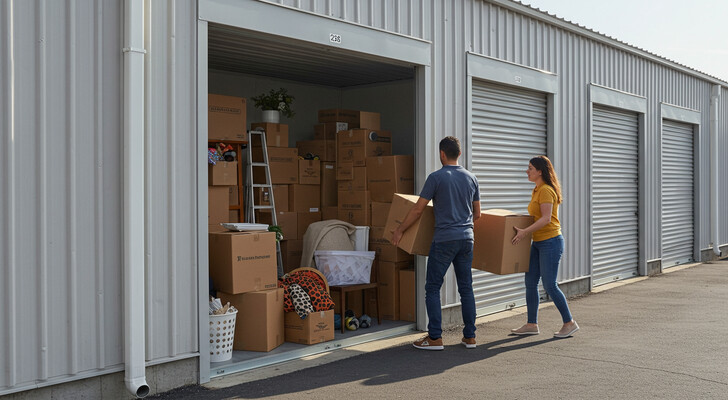Self-storage units have become an essential part of life for millions of Americans. With limited space in homes and apartments, rising housing costs, and more flexible lifestyles than ever, people are increasingly relying on self-storage solutions to keep their belongings safe, accessible, and out of the way. Whether you’re downsizing, in between moves, running a small business, or simply decluttering, self-storage can be the key to staying organized and stress-free.

Booming Industry
In the United States, self-storage is no longer a niche service. It’s a booming industry. According to the Self Storage Association, more than 10% of American households rent a storage unit. That’s over 30 million people, and the number continues to grow. One reason for this popularity is how easy it is to rent a unit. Many facilities offer online booking, flexible month-to-month leases, and 24/7 access. Most require just a valid ID and a credit card, with no long-term contracts or complicated paperwork.
How Do Storage Units Work?
If you’ve never used a storage unit before, the process is surprisingly simple. First, you choose a facility based on location, unit size, and features like climate control or drive-up access. Most facilities let you browse options and reserve a unit online or by phone. After booking, you’ll typically be given a gate code or key for secure entry. You can start moving your items in right away—many places allow same-day access. You bring your own lock, or purchase one at the office, and only you keep the key or combination. Units are secured, and most facilities have security cameras, gated entry, and on-site staff for added safety. You can visit your storage unit anytime during business hours or even 24/7, depending on the facility’s policy. Payment is usually due monthly, and you can cancel at any time if you’re on a month-to-month agreement.
Short Or Long Term?
There are two main types of self-storage arrangements: short-term and long-term. Short-term self-storage typically refers to rentals lasting a few weeks to a few months. It’s ideal for temporary needs such as moving between homes, storing furniture during renovations, or keeping college dorm items during summer break. These units are often rented on a monthly basis with no commitment, making them flexible and easy to cancel.
Long-term self-storage, on the other hand, is for those who need extended storage for six months or longer. It’s common among retirees downsizing to smaller homes, military members stationed overseas, or small business owners storing excess inventory. Long-term storage may come with better pricing if paid in advance or as part of a longer-term lease, and many people use it as a semi-permanent extension of their living or working space.
Is it Affordable?
Affordability is also within reach for many Americans. On average, a small 5×5 unit costs between $35 and $65 per month, while a medium 10×10 unit typically ranges from $90 to $150 depending on the location. In rural areas and smaller cities, prices can be much lower. Climate-controlled units and premium locations in major cities may push costs higher, but there are still plenty of budget-friendly options if you’re willing to compare a few nearby facilities.
How To Find One
Finding an affordable self-storage unit isn’t difficult. Start by searching online platforms like SpareFoot, Public Storage, Extra Space Storage, or U-Haul’s storage locator. These websites let you compare unit sizes, prices, customer reviews, and even promotional discounts. Many facilities offer deals for first-time renters, such as a free first month or discounted rates for the first few months. Choosing a storage facility slightly outside the city center can also significantly reduce your monthly cost.
The process of renting a unit is fast and straightforward. Most facilities let you reserve a unit online or by phone, and many offer contactless move-ins. You can typically access your unit the same day, and most places allow you to bring your own lock or purchase one on-site.
Self-storage isn’t just for people in transition, it’s become a long-term solution for families, students, military personnel, retirees, and small business owners. Some use it to store seasonal decorations, furniture, or excess inventory. Others treat their unit like an extension of their garage or closet, giving them more breathing room at home.
Conclusion
As urban living continues to shrink our personal space and life events keep shifting, self-storage offers a flexible, affordable, and secure way to manage our belongings. Whether for a month or a few years, it’s never been easier, or more common, to rent a little extra room for the things that matter.
 © Copyright 2025 Shirabe-ru | Terms | Privacy Policy | Contact Us
© Copyright 2025 Shirabe-ru | Terms | Privacy Policy | Contact Us

